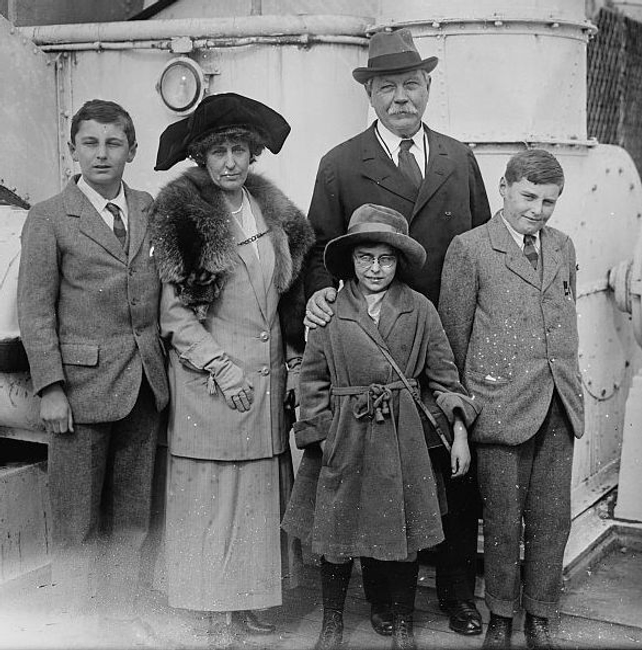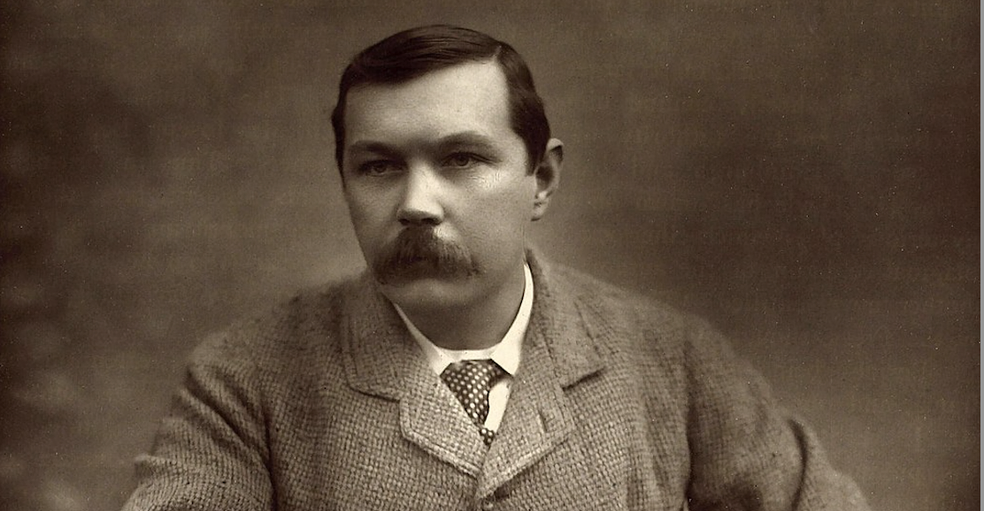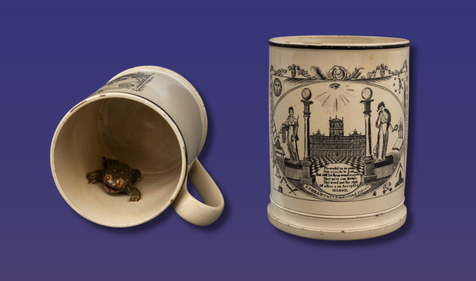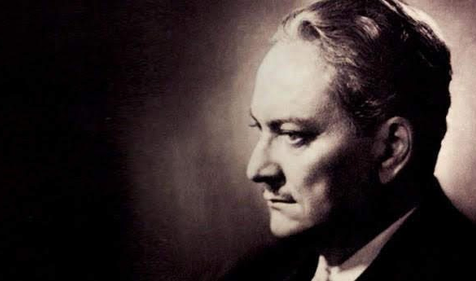Learn about Sir Arthur Conan Doyle, the renowned author of Sherlock Holmes, and his journey as a Freemason. Unravel his literary genius, prolific career, and the profound impact of Freemasonry on his life.
Renowned as the creator of the iconic detective Sherlock Holmes, Sir Arthur Conan Doyle's literary legacy transcends generations, captivating readers with his brilliant narratives and uncanny ability to create intricate mysteries. His literary career was prolific and included 60 to 70 books spanning historical novels, science fiction, non-fiction, plays, poetry, and more.
However, beyond the realms of fiction lies a man whose life was as fascinating and enigmatic as the characters he brought to life on the page. In this blog, we delve into the various facets of Brother Doyle's life, from his humble beginnings in Scotland to his meteoric rise as a celebrated author and his journey through Freemasonry.
Early Life in Edinburgh
Arthur Ignatius Conan Doyle was born on May 22, 1859, in Edinburgh, Scotland to Catholic parents Charles and Mary. His early childhood wasn’t the easiest or most stable, and when he was just five, his family was broken up due to his father’s alcoholism and growing psychiatric illness. He and his siblings were scattered in housing across the city for a few years, during which time Brother Doyle’s passion for writing began by writing letters to his mother.
In 1867, Brother Doyle and his family reunited to live in a ramshackle tenement until wealthy relatives stepped in and sent Brother Doyle to the Jesuit preparatory school Hodder Place in England. Even at nine years old, he was hungry for greater education and knowledge and would pursue it for the rest of his life. From Hodder Place, Brother Doyle went on to Stonyhurst College, which offered a very traditional, conservative education and harsh punishments.

From Prep School to Med School
Brother Doyle may have resented Stonyhurst for not providing access to topics he was interested in, such as German, but it was there where his love for literature blossomed. He eagerly read the works of Walter Scott and Jules Verne and founded a magazine, The Stonyhurst Figaro. Eager to explore new subjects and escape the Jesuit education, Brother Doyle left Stonyhurst in 1875 to attend Stella Matutina, in Feldkirch, Austria. This school allowed him to explore new subjects while also guiding him away from Catholicism. He became an agnostic and later a spiritual mystic.
Returning to Scotland in 1876, Brother Doyle studied medicine at the University of Edinburgh. His experience here changed his life, and subsequently the course of pop culture forever. Brother Doyle witnessed Dr. Joseph Bell, Professor of Surgery, make amazing deductions about his patients while examining them, later serving as the inspiration for Sherlock Holmes.
Doctor Doyle: Family Man and Freemason
In 1879, Brother Doyle anonymously published short stories: The Mystery of Sasassa Valley and The American's Tale. Between writing and studying, he worked as a medical assistant in Sheffield, Birmingham, and Shropshire, and as a doctor aboard a whaling ship in Greenland to help support his family. He graduated and received a Bachelor of Medicine and Master of Surgery qualifications in 1881 and earned his M.D. in 1885.
After struggling to build a successful medical practice with his former classmate George Turnavine, Brother Doyle set up an independent practice in Portsmouth, England in June 1882. With few patients coming around, Brother Doyle filled his days writing fiction and medical articles, including several advocating for compulsory vaccination. It was during then that he married for the first time. He wed Louisa Hawkins in 1885 and together they raised two children: daughter Mary Louise and son Arthur Alleyne Kingsley.
It was during his time in Portsmouth that Brother Doyle came to Freemasonry. He was initiated in Phoenix Lodge No. 257 in 1887 just as he published his first Sherlock Holmes story, A Study in Scarlet.
The manuscript wasn’t easy to sell and was rejected by several publishers before Ward, Lock & Co. bought it for just 25 pounds. It wasn’t an immediate success, but Brother Doyle had already moved on to his next writing projects, which included his first novel The Mystery of Cloomber.
These two early works showed the complexity of Brother Doyle’s beliefs. Here we had a short story about a cold, calculating detective who used scientific evidence in his case alongside a novel that contained paranormal phenomena. These opposing beliefs would pull him in different directions throughout his life.
Success and Sherlock Holmes
Although the first Holmes story wasn’t a hit, Brother Doyle struck a deal with The Strand Magazine in 1891, to write new detective short stories, including A Scandal in Bohemia and The Red-Headed League. Five more short stories followed in quick succession, and soon he was contracted to write one a month. Sherlock Holmes was now a national icon, and Brother Doyle a new celebrity along with him.

Now a full-time writer, Brother Doyle left the medical field and sought to move his career forward by focusing on creating more substantive literature. In late 1891 he wrote to his mother about his plan to kill Holmes in an upcoming story. She strongly objected, buying Sherlock a little more time.
During this time, Brother Doyle resigned from Pheonix Lodge in 1891 as soon after he and his wife moved to Switzerland. Louisa was sick with tuberculosis, and they wanted a quieter, healthier environment for her.
After another twelve stories, Brother Doyle finally followed through on his desire to kill off Sherlock Holmes in The Final Problem (1893). The backlash from the public was tremendous, but he stood pat in his decision.
1894 proved to be a year of change as he began traveling to pursue his many endeavors, first to the United States to give a series of lectures in Vermont, and then to Norway. By the following year, Louisa’s health had improved, and the couple agreed to return home after a six-month trip to Italy and then Egypt, where Brother Doyle temporarily became a war correspondent for the Westminster Gazette. The family settled in Undershaw, England where they built their home. At the onset of the Great Boer War in 1899, Brother Doyle again went abroad, to make a brief return to medicine as the supervisor for a field hospital in South Africa.
Back in England
Once returned to England in 1900, Brother Doyle wrote two books related to the war, The Great Boer War (1901) and The War in South Africa: Its Cause and Conduct (1902). The latter earned him knighthood and he became Sir Arthur Conan Doyle from then on. He also re-joined Pheonix Lodge in 1902 and spent the next decade as a member. A fun aside: some scenes in the 2009 Sherlock Holmes film starring Robert Downey Jr and Jude Law were filmed at the United Grand Lodge of England’s headquarters Freemasons’ Hall in London.

In 1906, Louisa, who had battled sickness for many years, sadly succumbed to her illness and passed. A year later, Brother Doyle married Jean Elizabeth Leckie. They had three children together, Denis, Adrian, and Jean Lena Annette. The couple settled for good in Crowborough, Sussex. During this period, Brother Doyle ran for Parliament but was not elected. With Europe spiraling closer toward the First World War in 1916, Brother Doyle and 52 other British authors signed their names to the "Authors' Declaration," justifying Britain's involvement in the First World War. He tried to enlist but was rejected for his age. Instead, Brother Doyle organized a local volunteer force and served as a war correspondent, later penning a lengthy history of "The British Campaign in France and Flanders."
Doyle the Spiritualist
As the war raged across continental Europe, Brother Doyle was stirred to pursue a different crusade: spiritualism. During the 19th and 20th centuries, spiritualism was a popular religious movement centered on the belief that spirits of the dead can communicate with the living. In the United States and Europe, seances, which are ceremonies where a medium attempts to communicate with the spirit world, were not uncommon. Brother Doyle became the movement’s most famous spokesperson and it sadly ended his friendship with another famous Freemason, Harry Houdini.
Despite Brother Houdini explaining that his stunts were based on illusion and trickery, Brother Doyle believed the magician had supernatural powers, even writing about it in The Edge of the Unknown. Brother Houdini was a staunch opponent of the spiritualist movement, insisting that spiritualist mediums employed trickery, and the subject caused an irreparable, public rift between the men.
Brother Doyle had expressed interest in spiritualism as early as 1887, and the death of his son Kingsley and other friends during World War I may have contributed to his belief. He also lost a brother, two brothers-in-law, and two nephews due to the war. It is entirely possible that in his grief his desire to maintain a link with these family members strengthened his connection to spiritualism. This was his final passion project; he published The History of Spiritualism in 1926 and 1927 and gave a filmed interview about both Sherlock Holmes and spiritualism.
Death and Legacy
Brother Doyle died of a heart attack on July 7, 1930, in Windlesham, his home in Crowborough, Sussex. The last words he spoke were to his wife, saying, "You are wonderful.” As a member of the spiritualist community, his funeral attendees celebrated rather than mourned the occasion of his passing to the Celestial Lodge. In the following weeks, thousands of people filled London’s Royal Albert Hall for a séance during which famous medium Estelle Roberts claimed to have contacted Brother Doyle.
Brother Doyle received several honors and awards in life, including:
- Knight Bachelor
- Knight of Grace of the Most Venerable Order of the Hospital of Saint John of Jerusalem
- Queen's South Africa Medal
- Knight of the Order of the Crown of Italy
- Order of the Medjidie – 2nd Class (Ottoman Empire)
Above all, Brother Doyle is remembered most for creating the beloved character Sherlock Holmes. Sherlock Holmes books are among the most widely published and translated in literary history, with countless editions available in multiple languages. Estimates suggest that hundreds of millions of copies of Sherlock Holmes books have been sold worldwide since they were first published in the late 19th century. This enduring popularity speaks to the timeless appeal of Sir Arthur Conan Doyle's iconic detective and the enduring fascination with his adventures.
Related Stories
Discover additional Scottish Rite blogs and news on this topic.
-
A Jolly Masonic Mug
History
Read More about A Jolly Masonic Mug
-
The Life and Career of Brother Arnold Palmer
Famous Masons
Read More about The Life and Career of Brother Arnold Palmer
-
Manly P. Hall: Philosopher, Mystic, and Freemason
Famous Masons
Read More about Manly P. Hall: Philosopher, Mystic, and Freemason



